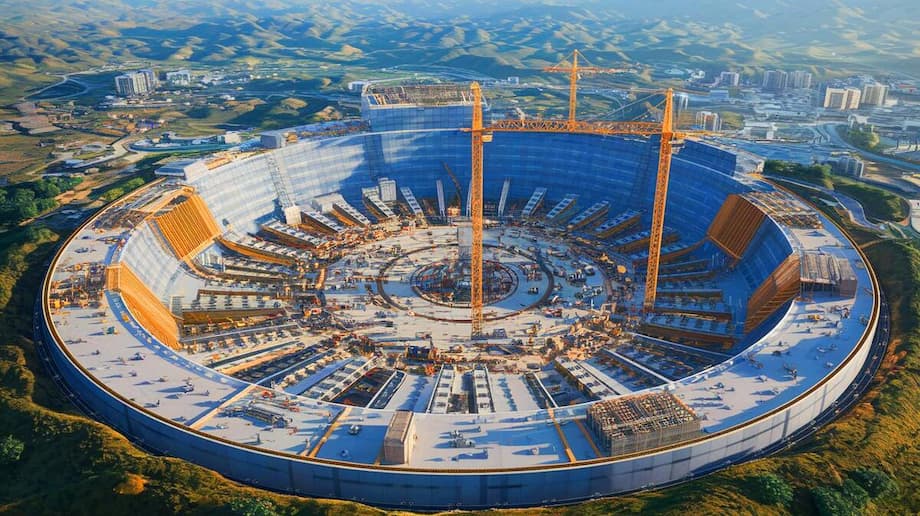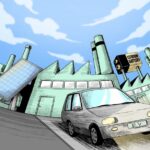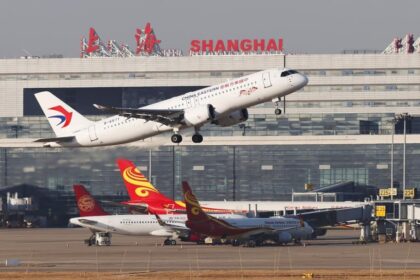How engineers ended up wielding power in Beijing
Expressways, high speed rail, and massive renewable energy projects have transformed China within a generation. Since the 1980s, the country has built a motorway network about twice the length of the American Interstate system and a high speed rail grid that is more than fifteen times the size of Japan’s. It deploys almost as much solar and wind power as the rest of the world combined and produces roughly one third of global manufactured goods. Those outcomes did not happen by accident. Many of the people steering Chinese policy are trained as engineers, managers, and scientists, and that training has shaped both priorities and methods of governance.
- How engineers ended up wielding power in Beijing
- From revolutionary cadres to technocrats, then to Xi era managers
- Why the party keeps choosing engineers
- Results on the ground: building fast at continental scale
- A rising cohort of STEM trained young cadres
- Innovation, education, and the AI test
- Risks of a command and control approach
- How this model compares with the United States
- Key Points
Beijing’s embrace of technocratic leadership reaches from the central government into provinces, cities, and the state enterprise sector. The approach prizes measurable results, mastery of complex systems, and long planning horizons. It also fits with the Communist Party of China’s preference for cadres who are both politically loyal and technically capable. This feature of Chinese politics helps explain the speed and scale of construction, the fast pivot to domestic clean energy, and the push to master strategic technologies from aerospace to semiconductors.
The composition of top bodies has changed over time, but the engineer mindset remains influential. Under Xi Jinping, a fresh wave of leaders with backgrounds in aerospace, nuclear engineering, and heavy industry has moved into elite posts. That cohort sits alongside party organizers, security officials, and macroeconomic managers, creating a leadership that is comfortable with projects measured in gigawatts, kilometers, and teraflops.
From revolutionary cadres to technocrats, then to Xi era managers
After the Mao era, Deng Xiaoping pushed China to modernize its economy and its governing ranks. In the 1980s and 1990s, engineers rose quickly through the party state. By the turn of the century, technocrats were the majority among ministers and provincial bosses. Two national leaders, Jiang Zemin and Hu Jintao, both trained as engineers. Hu graduated from Tsinghua University with a hydroelectric engineering degree before moving through the party ladder, a path that typified the generation that linked technical skill with political advancement.
As China approached the late 2000s, engineering credentials were common at the very top. A decade ago, eight of the nine members of the Politburo Standing Committee had studied engineering or the natural sciences, a reflection of the country’s drive to industrialize. By 2017, that pattern shifted. The new Standing Committee included no classic technocrats who had worked as engineers before politics, according to reporting at the time. Xi, who studied chemical engineering at Tsinghua, built his career as a party administrator and pursued advanced study in Marxist theory and political education. The change signaled a greater emphasis on political reliability and party craft at the summit of power.
Who are the Military Industrial Five
The technocratic current did not disappear. It resurfaced during the 20th Party Congress in 2022 when five newcomers with deep experience in the military industrial sector joined the 24 member Politburo, a group labeled by researchers as the Military Industrial Five. Zhang Guoqing, Yuan Jiajun, Li Ganjie, Ma Xingrui, and Liu Guozhong all spent major portions of their careers in engineering roles or in state firms tied to aerospace, energy, or advanced manufacturing before taking provincial and national posts. Their trajectories, from engineer managers to governors and party secretaries, reflect a talent pipeline that prizes both technical mastery and the ability to run large organizations.
These leaders come from a vast state owned ecosystem of defense and strategic industry corporations that has been reorganized over decades into large, centrally controlled groups. Under Xi, drawing from this pool has accelerated. The expectation is that they will apply production discipline to national priorities, from supply chain resilience to science spending, while aligning closely with directives from the center.
Why the party keeps choosing engineers
The Communist Party has long used the phrase red and expert to describe the desired mix of political commitment and technical skill. Engineers fit that formula. The current leadership emphasizes national security, technology self reliance, and tight coordination between civilian and military domains. Leaders who speak the language of materials, systems, and risk management are comfortable turning broad slogans into multi year programs with targets and timetables.
State enterprises serve as both proving ground and reservoir of such talent. Running a major aerospace conglomerate or a provincial power grid requires complex project management, quality control, and procurement on a national scale. Many engineer officials have also managed large workforces and budgets, experience that transfers directly to provincial governments and ministries.
Analysts at the Asia Society Policy Institute, who examined the 20th Party Congress, described the selection logic in terms that echo party rhetoric.
They are genuine engineers with strong management skills, trusted for their loyalty and expertise.
Results on the ground: building fast at continental scale
Engineer led governance shows up most clearly in physical infrastructure and energy policy. Expressways connect inland cities to ports and border crossings across distances that span subcontinents. The high speed rail network has grown to more than 40,000 kilometers, with new lines continuing to open across provinces. The national grid has been reworked to absorb a surge of renewable energy. China now deploys a large volume of solar panels and wind turbines, adding capacity at a pace that rivals the rest of the world put together.
Manufacturing has remained a core base. China produces about one third of the world’s manufactured goods, from machine tools and consumer electronics to chemicals and ships. The scale allows planners to set standards, support industrial clusters, and push local governments to secure land, permits, and logistics for large investments. The Party’s ability to mobilize state banks and to align provincial incentives has made it easier to fund multi year projects that would stall in many market democracies.
The engineer mindset also shapes targets. Leaders talk in concrete terms, kilometers of rail laid this year, gigawatts connected to the grid, units shipped for a domestic semiconductor tool. That focus creates momentum and accountability, even as it risks downplaying softer goals such as services quality or local consultation.
A rising cohort of STEM trained young cadres
Another shift is happening below the Politburo level. Bureau level officials born in the 1980s are moving into mid level posts across the party state. Many of these young cadres have elite STEM educations, including graduate degrees and doctorates from top Chinese universities. An Asia Society Policy Institute study finds that 84 percent of this group hold advanced degrees and nearly half have PhDs. They are products of China’s boom years and are comfortable with data, targets, and labs as well as party work.
Tsinghua University alumni stand out. The school, where Xi studied, is a powerhouse for engineering and applied science. Its graduates have benefited from alumni networks and attention from the center, a phenomenon sometimes described by researchers as a Tsinghua new army. The pipeline is reinforced by programs such as Selected Graduates and Dunmiao, which recruit elite university students into party tracks that combine grassroots stints with political training.
This cohort remains male dominated and largely Han Chinese. Their ascent reflects meritocratic filters and the leadership’s bet on technocratic competence. It also narrows the social base of the party elite, creating tension with the party’s self image as a mass organization that prioritizes broad representation.
Innovation, education, and the AI test
China’s education system now produces a vast pool of science and engineering graduates. In 2020, the country produced more than four times as many STEM graduates as the United States. In artificial intelligence, universities have added thousands of undergraduate programs since 2018. By 2022, nearly half of the world’s top AI researchers had undergraduate degrees from Chinese institutions, according to research cited by the New York Times. DeepSeek, a Chinese startup that jolted the AI world in 2025, drew its core team entirely from domestic universities, a point of pride that fed online debates about talent and innovation.
This strength comes with constraints. The party can change the direction of entire industries with a few regulatory decisions, as it did in 2020 when it reined in major internet platform companies. Layoffs and uncertainty dampened the appeal of the private tech sector for young engineers. Record numbers applied for civil service jobs, which pay less but offer stability. An exhausting corporate culture in some firms adds to the pressure. At the same time, the state has blessed AI as strategic, which has shielded parts of the sector from the worst swings and opened the way for generous funding and university industry partnerships.
Observers point to a central paradox. The abundance of trained engineers can power applied research and rapid product cycles, yet breakthrough innovation benefits from permission to fail, open networks, and a light regulatory touch. Even proponents of a strong industrial policy argue that too much micromanagement can sap the curiosity and risk taking that drive new ideas.
Risks of a command and control approach
Speed and scale have a cost. The same habits that deliver expressways and power plants can also produce rigid policies with human consequences. Zero Covid showed that tension plainly. During Shanghai’s 2022 lockdown, social media carried videos of airborne drones instructing residents not to sing from their windows. The scene, described in Dan Wang’s book Breakneck, became a symbol for many Chinese of a system that prizes order over voice.
‘Repress your soul’s yearning for freedom. Do not open your windows to sing, which can spread the virus.’
Opacity in state industry is another risk. The Aviation Industry Corporation of China, a flagship aerospace conglomerate, recently removed the public profiles of two senior executives from its website without explanation, including a deputy general manager who led design of the J 20 stealth fighter. The change followed an anti corruption investigation into a former chairman. Such episodes hint at internal scrutiny and discipline, but they also reveal how little the public learns about personnel decisions inside strategic companies that serve both military and civilian goals.
How this model compares with the United States
China’s leadership and the American system differ in training, incentives, and tempo. Beijing elevates engineers and enterprise managers who can execute national projects. Washington is full of lawyers, economists, and political professionals trained to argue, litigate, and negotiate. The contrast shows up in how projects get approved and how risks are weighed. Litigation and community input in the United States slow megaprojects but can surface blind spots and give citizens a say. China moves faster, often at the expense of public consultation.
Science strength also diverges. The United States remains a science superpower by many measures. It spends more on research and development than any other country, wins a large share of Nobel prizes, and leads in areas such as biomedicine. Private investment and world class universities attract global talent. Yet China is catching up on several metrics. It has surpassed the United States in the number of science and engineering articles and international patent applications, and it is projected to match American R and D spending before 2030. The direction of immigration policy and federal science funding in Washington will shape whether the United States remains the preferred destination for top researchers.
For both countries, the mix of people in power matters. An engineer led state is adept at hard infrastructure and industrial upgrades. A lawyer and economist led system stresses rule making, checks and balances, and academic freedom. Each model comes with strengths and trade offs that become clearer during crises and technological shifts.
Key Points
- Engineers have held key roles in Chinese leadership for decades, shaping a project driven governing style.
- Technocrats rose during the Deng era, and by the late 2000s most top leaders had engineering or science training.
- In 2017 the Standing Committee tilted toward political experts, although Xi himself studied chemical engineering.
- Five leaders from the military industrial sector entered the Politburo in 2022, including Zhang Guoqing, Yuan Jiajun, Li Ganjie, Ma Xingrui, and Liu Guozhong.
- State enterprises act as a training ground for engineer officials, reinforcing the red and expert doctrine.
- China’s build out of expressways, high speed rail, and renewable energy reflects engineer led priorities and execution.
- A younger cohort of cadres, many with PhDs and Tsinghua backgrounds, is rising through party programs.
- China produces a large share of the world’s STEM graduates and is cultivating AI talent, highlighted by DeepSeek’s success.
- Political control, regulatory swings, and corporate grind can limit creativity and dampen private sector appeal.
- Incidents during zero Covid and opaque shifts at AVIC show the risks of a command and control style.
- The United States remains strong in science and higher education, but China is closing gaps in publications and R and D spending.
- China’s engineer led approach trades speed and scale for deliberation and public input, while the American model favors legal checks and open debate.












